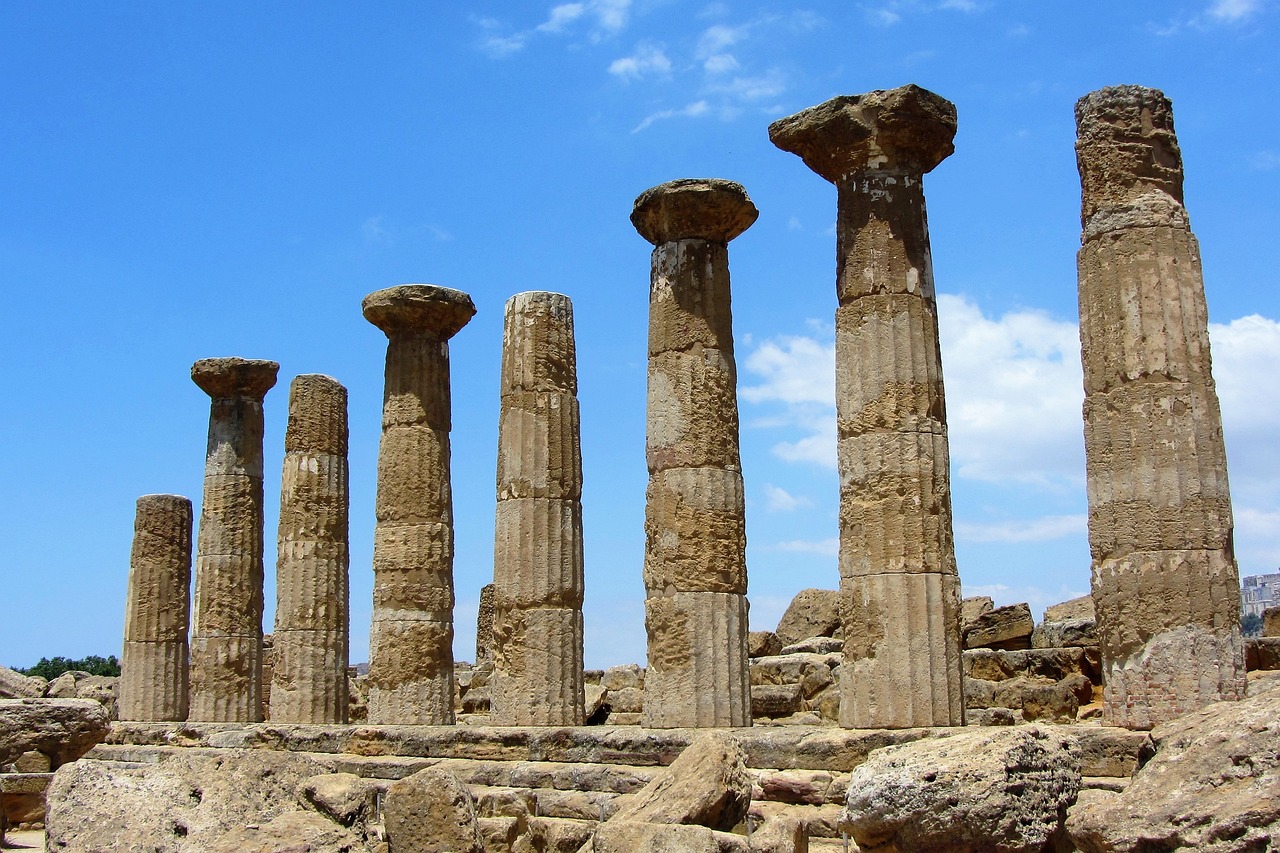The Legendary Exploits of Heracles
I. Heracles’ Twelve Labors
Heracles, the illustrious hero of ancient Greece, was tasked by the Delphic Oracle to undertake a series of twelve grueling labors on behalf of King Eurystheus of Mycenae. These remarkable feats not only showcased his strength and bravery but also defined his legendary status in Greek mythology. Below are depictions inspired by ancient Greek vase art, captured nearly 2,500 years ago.
II. The Additional Adventures of Heracles
Alongside the Twelve Labors, Heracles embarked on numerous other heroic quests termed ‘Parerga’ by the Greeks. These minor labors further enriched his saga, showcasing his prowess and resilience in overcoming various challenges.
III. The Worship of Heracles
Throughout the classical era, Heracles garnered reverence as a deity across Greece. His heroic deeds and adventures led to the establishment of cults that celebrated his virtues and mythological significance.
Notable Characters and Creatures in Heracles’ Myths
Stymphalian Birds
Achelous: The river god of Aetolia, who faced Heracles in combat over Deianeira’s affections.
Time: Following the Twelve Labors
Location: Aetolia, Western Greece
Alcyoneus: The king of the Thracian giants, who, despite his immortality in his homeland, was vanquished by Heracles.
Time: Following the Labors
Location: Pallene, Thrace
Antaeus: A Libyan giant drawing strength from the earth, but ultimately outmatched by Heracles who lifted and defeated him.
Time: During the 11th Labor
Location: Libya, North Africa
Arete and Kakia: Personifications of virtue and vice who presented choices to young Heracles, who opted for the noble path.
Time: Before the Labors
Location: Boeotia, Central Greece
Ascalaphus: The orchard keeper of Hades, freed by Heracles during his descent into the underworld for Cerberus.
Time: During the 12th Labor
Location: The Underworld
Atlas: The Titan condemned to hold up the heavens, who engaged in a bargain with Heracles for the Golden Apples of the Hesperides.
Time: During the 12th Labor
Location: Boeotia, Central Greece
Augeas: The king of Elis known for his colossal cattle herds. Heracles’s task to clean his stables led to a conflict after Augeas refused to compensate him.
Time: (1) The 5th Labor; (2) After the Labors
Location: Elis, Southern Greece
Busiris: The Egyptian king infamous for sacrificing captives, defeated by Heracles who broke free from captivity to slay him.
Time: During the 11th Labor
Location: Egypt, North Africa
Cacus: A fire-breathing giant who opposed Heracles while he transported Geryon’s cattle.
Time: During the 10th Labor
Location: Latium, Central Italy
Carcinus: A giant crab that aided the Hydra but was defeated by Heracles during their confrontation.
Time: During the 2nd Labor
Location: Argolis, Southern Greece
Caucasian Eagle: The eagle that regenerated its liver, dispatched by Heracles to liberate Prometheus.
Time: During the 11th Labor
Location: Caucasus Mountains
Centaurs: Half-human creatures who tried to disrupt Heracles’s feast but faced ruin at his hands.
Time: During the 4th Labor
Location: Elis-Arcadia, Southern Greece
Cerberus: The guardian of the underworld, captured by Heracles during his underworld expedition.
Time: The 12th Labor
Location: The Underworld
Cercopes: Mischievous bandit monkeys caught by Heracles; they earned their freedom with their humor.
Time: After the Labors
Location: Lydia, Anatolia
Cerynitian Hind: An exquisite golden-horned deer sacred to Artemis, which Heracles was to capture.
Time: The 3rd Labor
Location: Arcadia, Southern Greece
Cretan Bull: A massive bull that plagued Crete, which became the seventh challenge for Heracles.
Time: The 7th Labor
Location: Crete, Greek Aegean
Cycnus: A bandit and son of Ares, who perished in a duel with Heracles.
Time: After the Labors
Location: Phthiotis, Northern Greece
Diomedes: The Thracian king who kept man-eating horses. Heracles overcame him and fed him to the beasts.
Time: The 8th Labor
Location: Edonia, Thrace
Erymanthian Boar: A colossal boar wreaking havoc, which Heracles was tasked to capture alive.
Time: The 4th Labor
Location: Arcadia, Southern Greece
Eryx: A Sicilian ruler who tried to steal cattle from Heracles and faced defeat in a wrestling match.
Time: The 10th Labor
Location: Sicily, Southern Italy
Eurystheus: The king who set the trials for Heracles, significantly shaping his myth.
Time: During the Labors
Location: Mycenae, Greece
Hecate: The goddess associated with magic and the underworld, noted for her involvement in various myths.
Time: Throughout various myths
Location: Various locations
Hercules: The Roman adaptation of Heracles, embodying similar heroic qualities and exploits.
Time: Throughout the myths
Location: Various locations
Nemean Lion: The first labor of Heracles, a lion whose skin was impervious to weapons, requiring a battle of immense strength.
Time: The 1st Labor
Location: Argolis, Southern Greece
Orthus: The two-headed dog guarding Geryon’s herd, slain by Heracles.
Time: During the 10th Labor
Location: Erytheia, Western Ocean
Thanatos: The personification of death, whom Heracles overcame when rescuing Alcestis.
Time: After the Labors
Location: Phthiotis, Northern Greece
In the annals of Greek mythology, the tales of Heracles find their place among the most celebrated narratives, showcasing the timeless themes of heroism, strength, and the enduring struggle against formidable odds.



